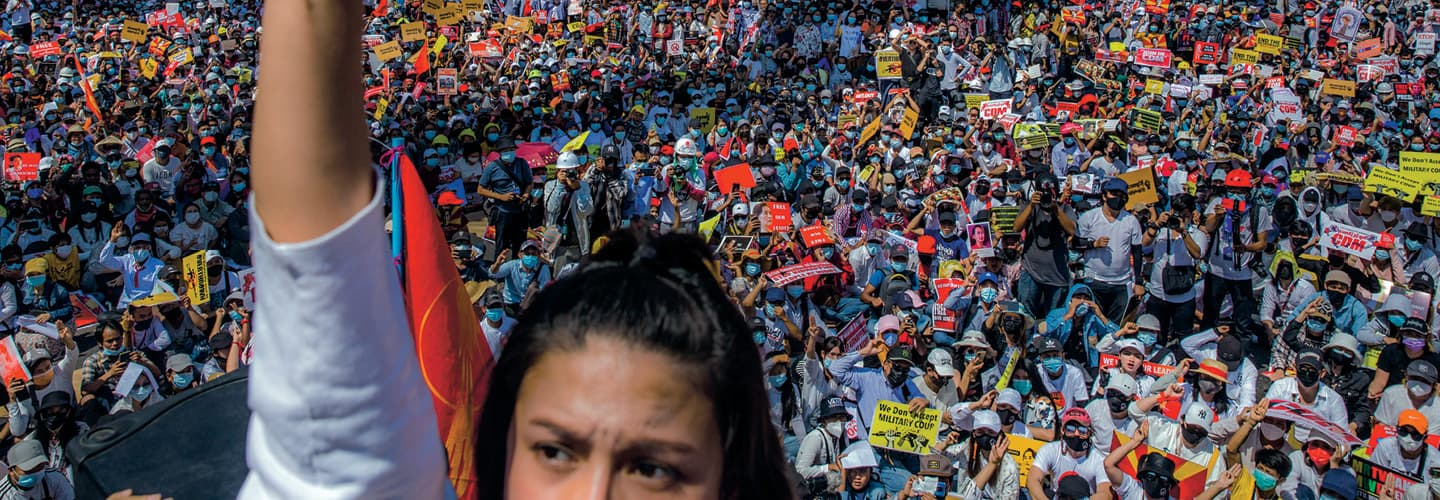Until last summer, U Sein Lin, a retired history teacher in Myanmar, had never played a video game in his life. Then, while scrolling through Facebook, he stumbled on War of Heroes. He’s been playing it nearly nonstop ever since.
The game allows Sein Lin, 72, to do virtually what he can’t do in real life: fight members of Myanmar’s military, who have killed thousands and implemented a brutal crackdown on this Southeast Asian country since seizing power in a coup two years ago.
U Sein Lin is a retired history teacher in Myanmar. He had never played a video game in his life until last summer. Then he stumbled on War of Heroes on Facebook. He’s been playing it nearly nonstop ever since.
The game allows Sein Lin, 72, to do virtually what he can’t do in real life—fight members of Myanmar’s military. Since seizing power in a coup, the military have killed thousands and implemented a brutal crackdown on this Southeast Asian country.

